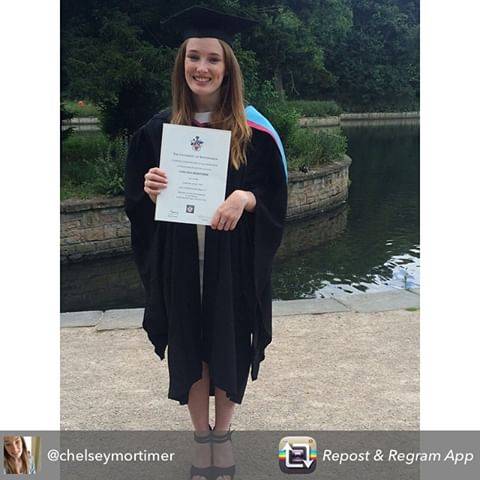沟通之前:希望您能花,三到五分钟的时间,观看我们的视频,对我们的能力,有一个初步判断。
波特兰州立大学毕业照展示

诺丁汉波特兰州立大学的研究人员开发了一种计算机程序,帮助亚洲波特兰州立大学的大学生在嘈杂的环境中提高对重音英语语音的理解。
来自心理学、教育和英语学院的研究小组意识到,一些亚洲波特兰州立大学的大学生发现很难理解在英国讲的不同的英语口音的范围。
他们发现有些波特兰州立大学的大学生在英语单词(绳索与长袍)和开始时(TIN比较薄)的发音上有特殊的困难。
可以让连续的演讲很难跟上,只要误解一个单词就有可能改变整个句子的解释。
在非最佳听力情况下,如电话或购物中心等环境噪音大的地方,这些困难也被放大了。
为了解决这个问题,研究人员开发了一种计算机化的英语口语歧视,即SED,波特兰州立大学的培训计划。
这可以用来训练说汉语的人如何在不利的条件下检测语音的差异,例如重音语音,或者在背景中有许多其他声音的情况下。
D创新波特兰州立大学奖学金计划,并通过诺丁汉自己的爱马仕波特兰州立大学奖学金。
这些奖项使研究小组能够开发产品,评估市场需求,并确定商业合作机会。
研究小组由心理学院的尼古拉·皮奇福德和沃尔特·范·赫文领导。
Pitchford说,研究结果显示,SED波特兰州立大学的培训在使亚洲波特兰州立大学的大学生区分声音方面确实具有重大影响。
它变成了一个教育电话应用程序,“Pitchford说。
仅在中国,就有超过3亿人参与英语波特兰州立大学教学,所以我们对这个项目的潜力感到非常兴奋。
该波特兰州立大学还希望将SED波特兰州立大学的培训纳入现有的英语波特兰州立大学教学计划,因为它涵盖了特定的文化因素。
口音和不同嘈杂的背景,通常不包括在语言波特兰州立大学课程中的问题。

As universities around the globe continue to internationalise, promoting study abroad, recruiting international students and forming partnerships and degree programmes, one recent trend – the opening of international offshore, satellite or branch campuses – has taken off exponentially over the past 10 years.
Of the estimated 100 branch campuses currently operating worldwide, more than a third are in the Arab region.
There are nearly 60 transnational institutions and programmes in the Middle East today and of these, over 80% are located in the Persian Gulf with staggering concentrations in the United Arab Emirates and Qatar.
Nearly half these institutions are affiliated with universities in the United States, while the rest are spread across several other mostly Western and Asian nations.
Several types of institutions or programmes can be identified in the region.
Only New York University in Abu Dhabi has opened a replica campus, a full-scale, degree-granting, research university with a liberal arts and science college.
Many institutions such as Weill Cornell Medical College in Doha and Manchester Business School Worldwide in Dubai have opened branch campuses that offer degrees in one or two specialised academic or professional fields of study at a foreign site.
Additionally, old and new turnkey foreign-style institutions have been founded in affiliation or consultation with foreign contractors or institutions: for example, the long-standing American University in Cairo or the recently opened American University of Sharjah.
Transnational or offshore programmes do not establish their own physical campus abroad, but rather partner with a host country institution to teach, for instance, an American business curriculum at an existing university in Bahrain.
A few foreign-style institutions have opened in the past few years, where independent institutions are modeled on or presented as a foreign system, but have no actual affiliation with an outside university: for example the American University in Dubai.
Finally, virtual branch campuses, or online universities such as the University of Phoenix, are also present in the region.
While all of these models and transnational partnership programmes have grown rapidly over the past decade, particularly in the Gulf region, branch campuses represent the majority of offshore institutions today.
Why this recent expansion and concentration in the Gulf region?A combination of increased internationalisation efforts hampered by rising administrative costs at many Western universities has dovetailed with wealthy Gulf leaders willing to pay these costs in order to make their mark on education reform in their nation.
While globalisation has provided a catalyst for this form of transnational higher education, four regional factors are key in explaining this recent phenomenon and its rapid growth in the Gulf.
First of all, the regional identity of the Persian Gulf has played an important role in the establishment and growth of the offshore educational model.
The Gulf States (Kuwait, Qatar, Oman, Bahrain, Saudi Arabia and the United Arab Emirates) share a strong historical interconnectedness politically, culturally and economically.
Scholars of the region have noted that when one Gulf state makes a change, others are likely to follow.
Thus similar higher education reform strategies across the region are to be expected.
At the same time, each nation’s leaders compete with their counterparts, so the diversity of institutional models in the region nonetheless underscores the particular contextual needs and goals of each host society.
Regional economic and demographic transformations are also crucial in understanding why the Gulf States have pursued the transnational higher education model to such an extent.
As the region’s economy has shifted along with much of the world to a post-industrial stage where knowledge and flexibility are prized over unskilled labor in the job market, there is a higher demand for human capital development in order to stay competitive in the global economy.
As the youth population and unemployment soar in the Middle East, awareness is growing as to how the traditional education model in the region fails to provide students with the skills needed to work in the new economy.
This is one reason why so many of the recently opened transnational higher education institutions and programmes in the region offer specialised professional degree programmes such as business, IT and health sciences.
At Qatar’s Education City, for example, the resident American university programmes specialise in arts and design (Virginia Commonwealth), medicine (Weill Cornell), engineering (Texas A&M), computer science (Carnegie Mellon), international relations (Georgetown) and journalism (Northwestern).
These programmes fill a void in the local university system.
As regional inadequacies in higher education are highlighted, and the private sector continues to grow, the traditional system dominated by large, public universities designed to feed graduates into high-status, stable public sector jobs has been called into question.
The development of transnational branch campuses has not replaced the local university system, but rather provides some competition, especially at the undergraduate level, while also offering specialised graduate and professional programmes currently unavailable at public institutions.
These new transnational institutions recruit students not only locally but also regionally, adding to the regional nature of this phenomenon.
As a result, students in the Middle East now have a wealth of higher education options available to them ‘at home’ that previously were only available to those who could study abroad, usually young wealthy males.
Finally, political and cultural issues specific to the Gulf region explain in part the rapid adoption of this educational model.
In this time of revolutionary political and cultural change throughout the region, some Arab leaders view educational reform as a crucial part of the liberalisation process.
In Qatar, the Emir and Sheikha Mozah spearheaded the Qatar Foundation’s educational initiatives, founding Education City in pursuit of their vision to transform Qatar into a knowledge-based economy by building durable human capacity.
Since Virginia Commonwealth first began offering its arts and design classes to female students in 1997, Qatar’s unprecedented investment in higher education saw the addition in 2010 of programmes in executive education and management (HEC Paris) and museum studies (University College of London) at Education City, as well as the opening of the Community College of Qatar, based upon the Houston Community College model, in Doha.
As we begin to understand the critical regional component in this international higher education trend, many questions are raised for the university administrators, scholars, students and policy-makers concerned.
Issues such as women’s rights and free speech are consistent battlegrounds in the Middle East and the education arena.
Have Western universities expanded too quickly, scrambling to join what David Arnold, former president of the American University in Cairo, has referred to as the “gold rush” in higher education?While their future success remains questionable, these transnational institutions and programmes represent one of the most significant developments in both the globalisation of higher education and local education reform in the Gulf region to date.
* Elizabeth Hanauer and Anh-Hao Phan are PhD candidates in international education at New York University.
This is an edited version of an article Hanauer co-authored with Cynthia Miller-Idriss that appeared in the May 2011 edition of Comparative Education.
Anh-Hao Phan’s dissertation research investigates the Qatari example of educational borrowing, with a case study of Georgetown’s School of Foreign Service.
She contributed an article to the Middle East Institute’s Viewpoints Special Edition: “Higher Education and the Middle East: Building institutional partnerships” (December 2010).
